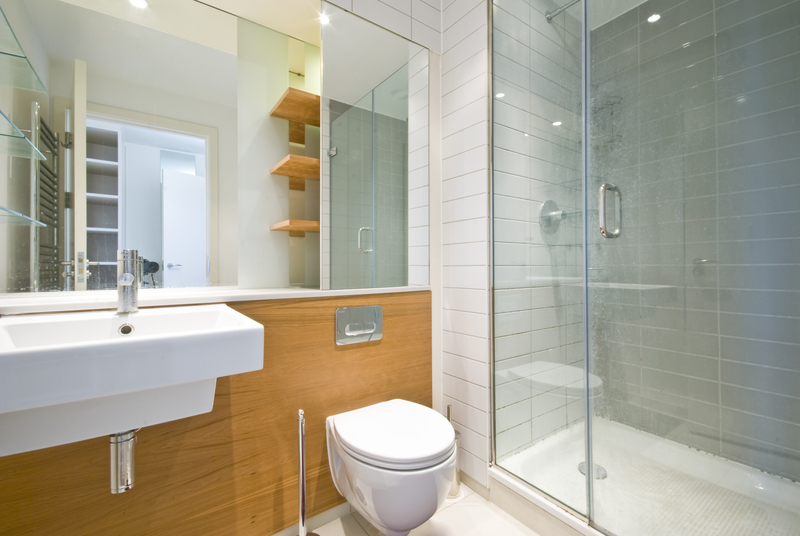Maintaining Order with a Structured Cleaning Plan
Posted on 30/05/2025
Maintaining Order with a Structured Cleaning Plan
Keeping spaces tidy is often a constant battle. Yet, maintaining order with a structured cleaning plan can significantly reduce stress, save time, and boost productivity. If you're tired of chaotic living or working conditions, adopting a detailed cleaning schedule is your best solution.
Why a Structured Cleaning Plan is Essential
A structured cleaning routine offers several advantages over random, sporadic tidying sessions. Not only does it ensure your space remains clean consistently, but it also helps you keep up with maintenance rather than falling behind. Let's examine the key benefits of sticking to a cleaning plan.
- Reduces Stress and Anxiety: Clutter can cause mental unrest. Regular cleaning fosters a sense of peace and control.
- Saves Time: A plan prevents chores from piling up, making each session shorter and more manageable.
- Promotes Health: Consistent cleaning eliminates dust, germs, and allergens, benefiting your well-being.
- Enhances Productivity: An organized space allows you to focus, think clearly, and accomplish more.
- Improves Aesthetics: Nothing beats the sight and comfort of a tidy environment, welcoming for you and visitors.

Components of a Structured Cleaning Plan
Crafting a structured cleaning plan is about more than writing a to-do list. It involves strategy, consistency, and flexibility. Here's what your plan should include:
1. Categorizing by Frequency
- Daily Tasks: These are must-do chores that keep surfaces clean and clutter at bay, such as making beds, wiping counters, or loading the dishwasher.
- Weekly Chores: Tasks like vacuuming, dusting, mopping, and bathroom cleaning should happen once a week.
- Monthly Duties: Deeper cleaning, such as washing windows, cleaning light fixtures, and wiping baseboards.
- Seasonal Projects: Tasks like decluttering closets, rotating or washing curtains, deep-cleaning appliances.
2. Assigning Locations
Create a room-by-room checklist to ensure comprehensive cleaning. Tailor tasks to specific areas, since bathrooms, kitchens, living rooms, and bedrooms all have unique needs.
3. Allocating Responsibilities
If you share your space, delegate tasks. Assign cleaning duties to household members based on age, ability, and preference for efficiency and fairness.
4. Setting Realistic Goals
Avoid overwhelming yourself with perfection. Set achievable, incremental goals each week. Celebrate small wins to stay motivated.
Step-by-Step: Creating Your Structured Cleaning Plan
Let's develop your customized cleaning schedule for maintaining order. The following steps will help you transform cleaning from a dreaded chore into a manageable routine.
Step 1: List and Prioritize Cleaning Tasks
Start by listing every cleaning chore required in your home or workspace. Then, prioritize them by importance and frequency using the categories above.
- Must-do daily: E.g., dishes, counters, trash removal
- Weekly essentials: E.g., vacuuming, bathrooms, laundry
- Monthly focus: E.g., dust ceiling fans, clean windows
- Seasonal projects: E.g., decluttering, carpet cleaning
Step 2: Create a Cleaning Calendar
A visual schedule keeps you accountable. Use a wall calendar, planner, or digital app to assign specific tasks to days of the week. For example, kitchens on Tuesdays, bathrooms on Thursdays.
Tip: Keep your plan flexible! Life happens, so swap days as needed, but aim never to skip a week for vital chores.
Step 3: Stock Up on Supplies
Gather your cleaning materials before you start. Having the right supplies on hand, such as microfiber cloths, all-purpose cleaner, broom, mop, and vacuum, streamlines the process. Regularly check stock and replace items as necessary.
Step 4: Get Everyone Involved
If you cohabit, a shared cleaning plan lightens the load. Assign age-appropriate tasks to kids, or alternate weekly chores among roommates or family members.
Step 5: Track Your Progress
Checking off finished chores is rewarding. Use printable checklists or digital apps to monitor progress. Review your plan monthly and tweak it as needed for continuous improvement.
Room-by-Room Cleaning Plan
A truly effective approach to maintaining order relies on room-specific attention. Here's a sample guide:
Kitchen Cleaning Plan
- Daily: Wash dishes, disinfect countertops, sweep floors, take out trash.
- Weekly: Mop floor, clean appliances exterior, wipe cabinet fronts.
- Monthly: Clean fridge and freezer, descale kettle, deep-clean oven.
- Seasonal: Organize pantry, deep-clean cabinets, dispose of expired food.
Bathroom Cleaning Plan
- Daily: Wipe sinks, hang towels, empty trash.
- Weekly: Scrub toilets, tubs, mop floors, clean mirrors.
- Monthly: Clean showerheads, wash bath rugs, check for leaks.
- Seasonal: Replace shower curtain, deep clean grout, declutter cabinets.
Bedroom Cleaning Checklist
- Daily: Make bed, put away clothes, tidy surfaces.
- Weekly: Dust furniture, vacuum, change bedding.
- Monthly: Flip mattress, organize closets.
- Seasonal: Donate unused items, wash pillows, switch seasonal clothing.
Living Room Cleaning Plan
- Daily: Tidy up magazines, fluff pillows, put away electronics.
- Weekly: Dust surfaces, vacuum floors and upholstery.
- Monthly: Wash throw blankets, clean windows, vacuum behind furniture.
- Seasonal: Deep-clean carpets, swap decor, declutter shelves.
Tips for Maintaining Order All Year Round
- Declutter Regularly: A structured plan should include periodic decluttering to prevent build-up.
- Stay Consistent: Consistency is key to maintaining order. Stick to your plan as closely as possible.
- Set Time Limits: Allocate a specific amount of time for each task. For instance, clean the kitchen for 15 minutes each day.
- Make it Fun: Play music or listen to podcasts while cleaning to make the process enjoyable.
- Reward Yourself: Celebrate your progress, whether it's enjoying a clean home or treating yourself to a small reward.
- Review and Adjust: Life changes, so review your organized cleaning strategy each season and adjust as needed.
Common Obstacles - And How to Overcome Them
Creating and following a structured cleaning schedule is not without its challenges. Here's how to handle some of the most common hurdles:
- Lack of Motivation: Set small, attainable goals and reward yourself.
Try habit stacking -- attaching cleaning to another routine, like listening to your favorite playlist. - No Time: Break chores into manageable chunks throughout your day. Five or ten minutes here and there add up.
- Family Resistance: Involve everyone in creating the plan and assign fun, age-appropriate tasks.
- Overwhelm: Focus on one area at a time. If you fall behind, don't stress; simply pick up where you left off.
Leveraging Technology for Cleaning Organization
Modern tools and apps make it easier than ever to maintain a structured plan. Consider using:
- Digital calendars (Google Calendar, Outlook) to set recurring cleaning reminders.
- Printable checklists from online organizing sites.
- Cleaning apps (such as Tody or Clean My House) that track progress and suggest schedules.
- Smart home devices (robot vacuums, voice assistants) to automate or remind you of chores.
Benefits Beyond Cleanliness
Adhering to a structured and organized cleaning plan delivers results that go far beyond a tidy space:
- Health: Fewer bacteria and allergens means a healthier family.
- Mindset: Orderly surroundings support positive mental health and reduced anxiety.
- More Free Time: No last-minute frenzies mean more time to relax and enjoy your space.
- Better Relationships: Shared responsibility leads to fewer household arguments and more cooperation.
- Increased Property Value: Regular maintenance preserves and even boosts your space's appeal long-term.

Frequently Asked Questions about Structured Cleaning Plans
- How often should I review my cleaning plan?
- At least seasonally. Adjust for new schedules, lifestyle changes, or major life events.
- Can a cleaning plan really save time in the long run?
- Absolutely! By staying ahead, you prevent marathon cleaning sessions and keep spaces orderly.
- What if I miss a cleaning day?
- Don't worry. Reschedule and pick up where you left off. Consistency matters more than perfection.
- Is a structured plan suitable for small apartments?
- Yes! In smaller spaces, daily tidying and organization are even more crucial to avoid clutter build-up.
The Takeaway: Order Starts with a System
Maintaining order with a structured cleaning plan empowers you to take control of your environment, minimize stress, and create a haven of comfort and productivity. Whether you're looking to boost organization at home or streamline your workspace, an organized, well-planned cleaning routine can transform your life.
Start small, set realistic goals, and revise your plan as you go. Before long, daily maintenance will become second nature, ensuring ongoing cleanliness and peace of mind.
Ready to restore order in your space? Begin with a structured cleaning plan today--and enjoy a more beautiful, efficient, and organized tomorrow!




